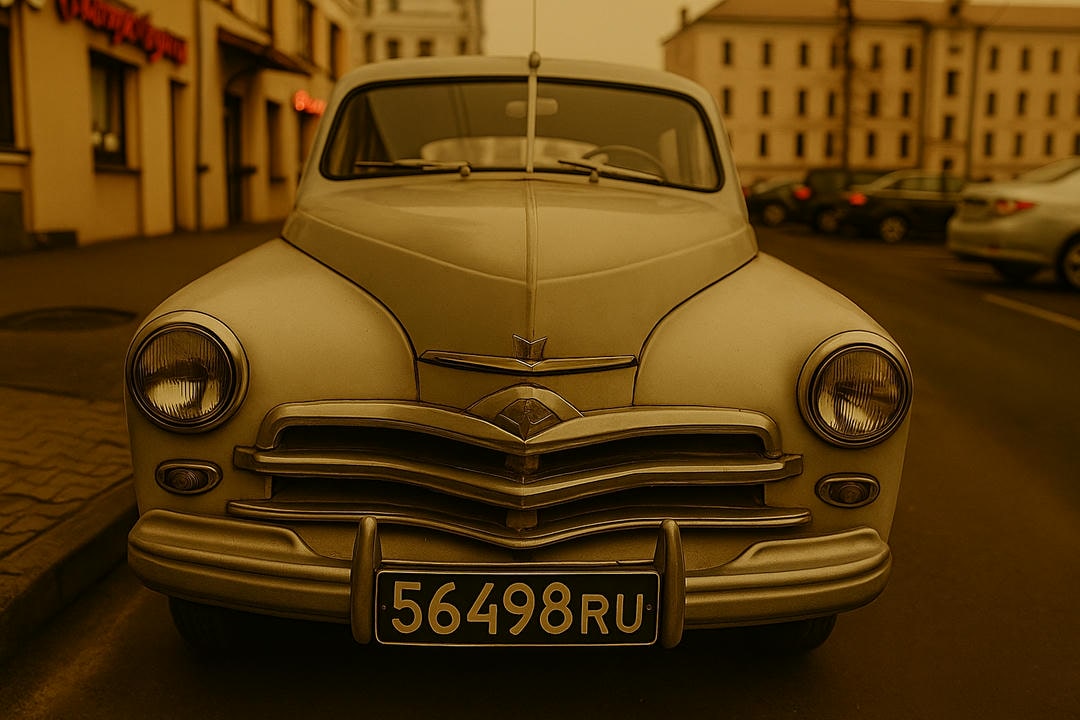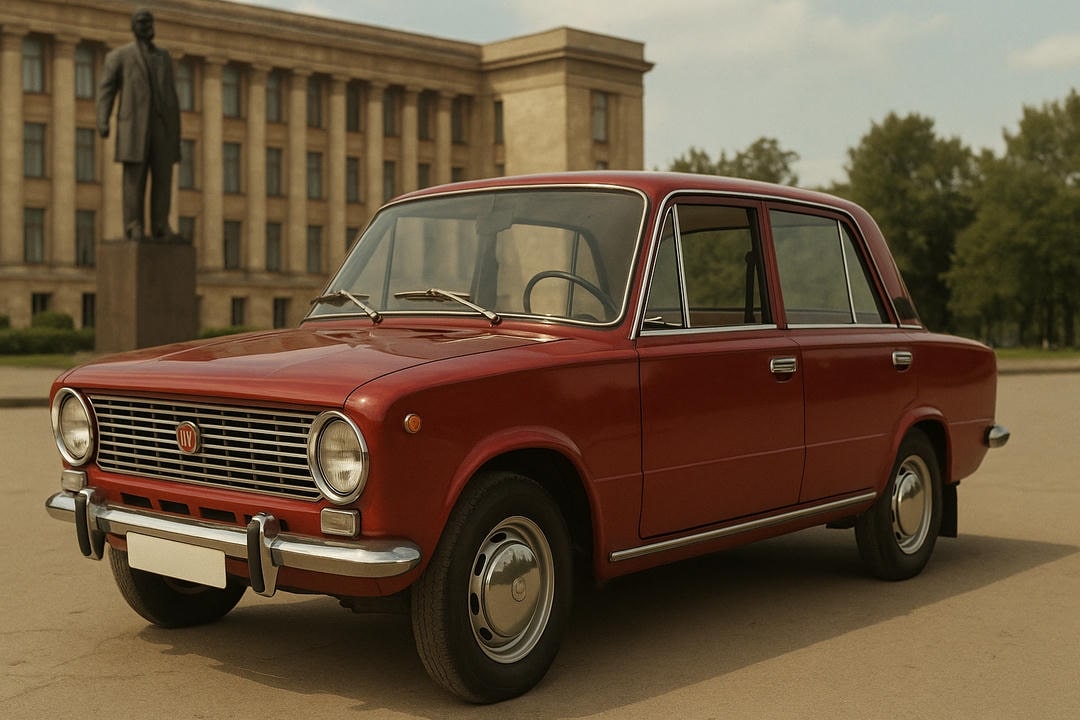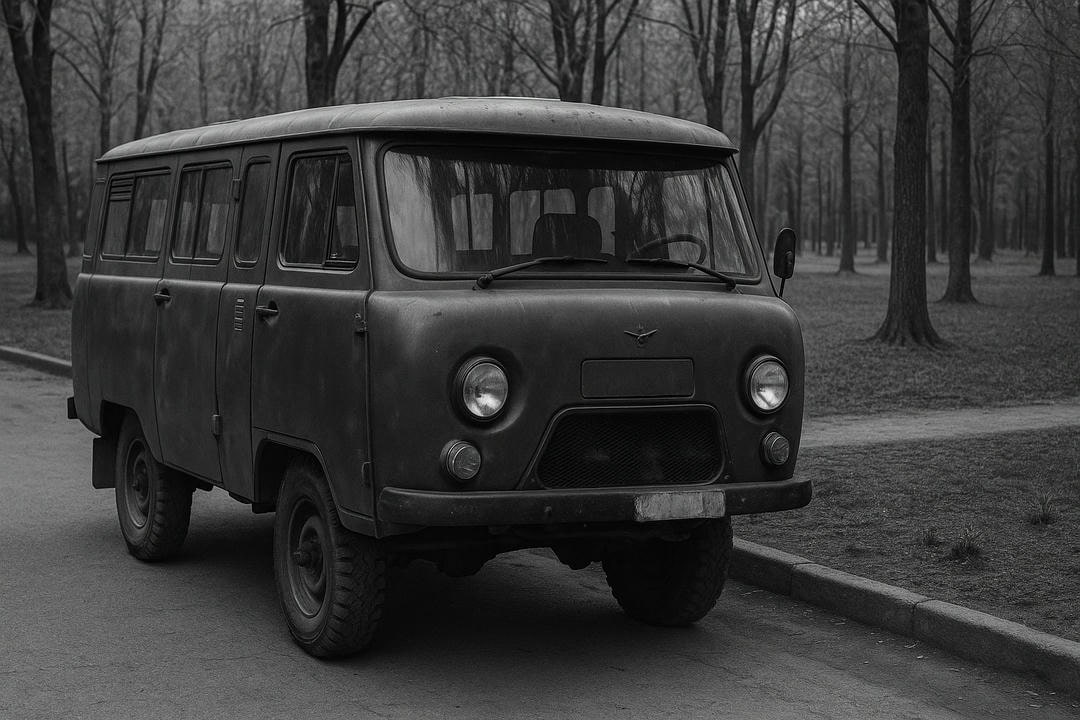The custom car movement during the Soviet era was a fascinating blend of ingenuity and resilience, born in a society where official automotive options were limited and personal expression was often stifled. Despite strict state controls and chronic shortages of materials, passionate tinkerers found ways to transform standard-issue vehicles into unique machines that reflected their individual vision and technical prowess. This spirit is evident in iconic examples such as the Trud and Speedy GTSCH, remarkable for their inventive engineering and distinctive styling, achieved with little more than salvaged parts and sheer determination.
Equally significant were models like the Lada—specifically, the VAZ-2101 and its successors—which became a canvas for countless custom projects. The Lada was not just a symbol of reliable Soviet engineering; it was also beloved for its simple design and ease of modification, allowing enthusiasts to enhance performance, aesthetics, and comfort. The UAZ-452, affectionately known as the “Bukhanka” (the bread loaf), stood out as a versatile workhorse equally at home in remote Siberian villages and bustling urban centers. Its ruggedness inspired adventurous custom builds tailored for exploration across Russia’s vast landscapes.
These custom creations were more than mere vehicles; they were acts of quiet defiance and sources of pride. Beyond their technical aspects, they signified a subtle assertion of identity in a collective society and highlighted the resourcefulness that defined Soviet craftsmanship. The movement’s legacy continues to resonate in Russia’s modern car culture, where respect for innovation and a deep appreciation for mechanical skill remain central values. The lasting influence of Soviet-era customizers demonstrates that even under challenging conditions, creativity can flourish and leave a mark on both the automotive world and the broader cultural narrative.
The Birth of Custom Cars in the USSR

During the 1920s and 1930s, as the Soviet Union underwent rapid industrialization and sweeping social change, an unlikely form of personal expression began to take root: custom car building. Unlike the West, where car customization was often associated with style, performance, and consumer choice, the Soviet version arose from scarcity, necessity, and determination.
Origins in Scarcity and Ingenuity
Private car ownership in the USSR was extremely rare. The state controlled almost all aspects of production and distribution, prioritizing public transportation and official vehicles over private automobiles. For most citizens, owning a car was out of reach, let alone modifying one for personal taste or performance. However, a small group of engineers, mechanics, and hobbyists—often connected to technical institutes or factories—found creative ways to circumvent these limitations.
With new vehicles nearly impossible to obtain, enthusiasts repurposed derelict cars, military surplus, or even agricultural equipment. Motorcycle engines, which were more available than automobile powerplants, frequently powered these home-built vehicles. The bodywork was often fashioned from whatever materials could be scrounged: scrap metal, wood, or salvaged car parts. Soviet magazines such as “Za Rulem” occasionally published stories of these inventors, showcasing their resourcefulness while carefully adhering to the official line.
Navigating State Restrictions
Soviet authorities imposed strict regulations on engine sizes, fuel consumption, and vehicle speed. The state viewed excessive individualism with suspicion, especially if it appeared to challenge collective ideals or draw attention away from approved technological accomplishments. Despite this, custom car builders found ways to innovate within the narrow limits set by the government. Some used their creations for motorsports—racing on frozen lakes or makeshift tracks—while others simply enjoyed the satisfaction of building something unique.
Impact and Legacy
Aesthetically, early Soviet custom cars were utilitarian rather than stylish. Their primary aim was functionality: getting from point A to point B with whatever was at hand. Nonetheless, these vehicles represented a quiet rebellion against uniformity. Over time, as the USSR opened slightly in the postwar years and new models like the GAZ-M20 “Pobeda” and Moskvitch 400 appeared, a subculture of modification and personalization grew. The seeds planted by the pioneers of the 1920s and 1930s eventually blossomed into a more visible—and sometimes officially tolerated—custom car scene by the 1960s and 1970s.
The birth of custom cars in the USSR was shaped by ingenuity in the face of scarcity and regulation. It demonstrated how creativity can flourish even in constrained environments, leaving a lasting mark on Soviet automotive culture.
These custom builds, often lacking aesthetic refinement, laid the groundwork for a movement that would later embrace more sophisticated designs, pushing the boundaries of creativity within a restrictive framework.
The Ingenious Trud: A Labor of Love
The Trud is a standout example of Soviet-era custom car craftsmanship, embodying both the challenges and creativity that defined automotive innovation behind the Iron Curtain. Built in the early 1960s by Oleg Kucherenko, the Trud was more than just a personal project—it was a bold statement about overcoming scarcity with ingenuity.
Kucherenko constructed the Trud using nearly sixty metal plates, all salvaged from junkyards and industrial scrap heaps. This resourcefulness was typical of the time, as access to new materials and factory parts was extremely limited for private citizens. Despite these constraints, the car’s construction quality was exceptional. Kucherenko meticulously hand-shaped each panel, achieving smooth body lines with no visible welding seams—an impressive feat that gave the Trud a professional, almost factory-made appearance.
Under the hood, the Trud featured a rare three-cylinder engine, a configuration not commonly seen in Soviet vehicles of the period. This engine was custom-built by Kucherenko himself, combining parts from various machinery and motorcycles. The result was a compact yet surprisingly efficient powertrain that set the Trud apart from ordinary backyard builds.
Aesthetically, the Trud was ahead of its time. Its streamlined silhouette and carefully finished details reflected Kucherenko’s background in engineering and design. The car’s proportions and contours rivaled those of Western models, demonstrating that Soviet enthusiasts could match their global counterparts in both style and craftsmanship.
The Trud became a symbol of determination and self-expression for generations of Soviet car builders. It captured the imagination of a community often limited by regulations, shortages, and a lack of resources. Kucherenko’s achievement was celebrated in automotive circles, with the Trud making appearances at exhibitions and in enthusiast magazines as an icon of what could be accomplished through skill and perseverance.
Today, the Trud stands as a testament to Soviet ingenuity—a reminder that creativity can flourish even in the most challenging circumstances. It continues to inspire automotive enthusiasts and serves as a valuable artifact of an era when necessity truly was the mother of invention.
 Lada: The People’s Canvas
Lada: The People’s Canvas

During the Soviet era, the Lada—especially the VAZ-2101 and its later models—became an unexpected icon of personal expression and ingenuity. Originally designed as a practical, affordable car for the masses, the Lada’s straightforward engineering and accessible price made it widely available throughout the USSR. While its basic appearance and mechanics were dictated by state planners, these very qualities made it perfect for modification.
Resourceful owners and amateur mechanics saw the Lada not just as transportation, but as a blank canvas. Popular modifications included engine swaps, suspension upgrades, and custom bodywork, often achieved using repurposed parts from other Soviet vehicles or even handmade components. Some enthusiasts added striking paint jobs or flashy wheels, while others focused on improving speed or off-road capability. Despite limited access to Western tools and technology, Lada owners relied on creativity and traditional Russian know-how to make their cars stand out.
The Lada’s role in Soviet custom car culture went beyond individual projects—it helped foster a sense of community among like-minded enthusiasts. Informal gatherings and underground car clubs began to spring up, where people shared tips, parts, and stories of their latest creations. The enduring popularity of the Lada in Russia today is a testament to its cultural significance, reminding us that even under restrictive conditions, the desire for self-expression and technical mastery can drive innovation.
The Speedy GTSCH: A Family’s Passion Project
The GTSCH represents a fascinating chapter in the story of Soviet custom car culture—a testament to what passion, ingenuity, and resilience could achieve behind the Iron Curtain. Born from the collaborative efforts of brothers Anatoly and Vladimir Shcherbinin in Rostov-on-Don during the late 1960s, the GTSCH was much more than a homemade car; it was a symbol of family unity and creative defiance.
Lacking access to proper workshops or advanced machinery, the Shcherbinin brothers converted their apartment building’s modest courtyard into an impromptu garage. They improvised tools and sourced materials wherever possible, often relying on personal connections and scrap parts. The heart of their creation was a Volga GAZ-21 engine—an inline-four that, while standard in sedans, was coaxed far beyond its typical performance. With meticulous tuning, weight reduction, and careful engineering, the brothers managed to push the GTSCH to top speeds around 150 km/h (about 93 mph), a remarkable feat considering that most Soviet cars of the era struggled to reach 120 km/h.
Much of the GTSCH’s allure came from its exterior. Unlike the boxy, utilitarian shapes common in Soviet cars, its low-slung fiberglass body featured sweeping lines and a dramatic silhouette inspired by Western sports cars and American action movies—a bold statement in a society where such expressions were rare and often frowned upon.
Despite strict regulations that discouraged private car modifications and limited access to automotive parts, projects like the GTSCH thrived thanks to sheer determination and resourcefulness. For the Shcherbinin brothers, building the GTSCH was not only about speed or aesthetics—it was about carving out a space for personal freedom and creative expression within a system that tightly controlled individual ambition.
Today, the GTSCH stands as an inspiring reminder of what can be accomplished with vision, teamwork, and unwavering dedication, even under the most restrictive conditions. It remains a cherished artifact among enthusiasts, illustrating how ordinary people transformed limitations into opportunities for innovation.
Pangolina: The Soviet Sports Car That Turned Heads
The Pangolina stands out as one of the boldest expressions of Soviet-era automotive creativity. Conceived and built by engineer Alexander Kulygin in the early 1980s, this unique car fused the mechanical reliability of a VAZ-2101 engine (commonly known as the Zhiguli or “Kopeyka”) with a radical, futuristic body that defied the boxy conventions of the time.
Innovative Design Features
Unlike mass-produced Soviet vehicles, the Pangolina’s entire body was crafted from lightweight fiberglass—a material choice that was rare for home-built cars in the USSR. This not only reduced the car’s overall weight but also contributed to its impressive top speed of around 180 km/h, outperforming most domestic rivals.
A hallmark of its design was the hydraulically operated front hood, which lifted upward to reveal both the engine bay and the integrated headlights. These headlights were seamlessly incorporated into the bodywork, adding to the vehicle’s sleek, streamlined silhouette. The windshield wrapped deeply around the cockpit, while pop-up doors and flush wheel covers further enhanced its dynamic appearance.
Engineering Ingenuity
Despite limited access to Western automotive technologies, Kulygin relied on ingenuity and resourcefulness. The car’s chassis was custom-built to fit the fiberglass shell, while many mechanical components—including suspension and drivetrain—were adapted from existing VAZ models. Attention to aerodynamics and weight distribution reflected a level of engineering rarely seen in Soviet garages.
International Recognition
The Pangolina made a splash beyond Soviet borders when it appeared at the 1985 International Car Expo in Plovdiv, Bulgaria. There, it attracted significant attention for its unorthodox design and was widely photographed by visitors and journalists alike. Although it remained a one-off prototype, its international exhibition hinted at what might have been possible had Soviet auto production pursued more experimental models.
Cultural Impact and Legacy
For many car enthusiasts in the Soviet Union, the Pangolina symbolized a yearning for personal freedom and style—qualities often suppressed by utilitarian state production. It became an inspiration for other Soviet customizers and is still celebrated today as a testament to individual creativity under challenging circumstances.
Though it never entered mass production, the Pangolina endures as a cult classic—a rare and tangible reminder that even during austere times, there was room for passion, innovation, and dreams of speed. Its legacy endures, symbolizing the ingenuity and aspirations of a generation seeking freedom through automotive expression.
![]()
Bukhanka: Soviet Versatility on Wheels

The UAZ-452, known fondly as the “Bukhanka” (meaning “loaf of bread” in Russian due to its boxy shape), played a unique role in the custom car scene of the Soviet Union. Originally introduced in the 1960s as a robust utility van, the Bukhanka quickly earned a reputation for its durability, simplicity, and impressive off-road capabilities. Its sturdy frame and utilitarian design made it a favorite among rural communities, military units, and adventurous souls who needed a vehicle that could handle Russia’s rough and unpredictable terrain.
For many Soviet citizens, the Bukhanka wasn’t just a means of transportation—it was a lifeline. Families, farmers, and explorers customized these vans to suit their specific needs. Some converted them into makeshift campers for long overland journeys; others transformed them into mobile workshops, ambulances, or even mobile stores. With limited access to spare parts, Bukhanka owners often had to fabricate their own solutions, resulting in countless unique builds that were as functional as they were creative.
The Bukhanka’s enduring legacy is a testament to Russian resourcefulness and adaptability. Its continued popularity today—still rolling off factories with minimal changes—reflects its iconic status and the deep connection people feel to this symbol of hard work and ingenuity. In a time when options were few, the Bukhanka proved that with a little imagination, even the most utilitarian vehicle could become something special.
Triton: The Dual-Purpose Marvel
Among the inventive custom vehicles of the late Soviet era, the Triton stands out as an extraordinary achievement. Conceived and built by Dmitry Kudryachkov—a musician with a passion for engineering—the Triton was not just a car, but a true amphibious marvel. Its design blurred the line between automobile and boat, offering genuine dual-purpose functionality at a time when such innovations were practically unheard of in the USSR.
Engineering Meets Ingenuity
Kudryachkov’s approach was both creative and pragmatic. The Triton was powered by a robust GAZ-21 engine, known for its durability and broad availability. Integrating this engine into a lightweight, streamlined body allowed the vehicle to perform capably both on land and water. With its hull-like lower body, watertight seals, and carefully balanced center of gravity, the Triton could seamlessly transition from road to river without the need for modifications or elaborate preparation.
Performance on Two Fronts
On land, the Triton achieved speeds of up to 120 km/h, rivaling many conventional Soviet sedans of the era. On water, it cruised comfortably at 50 km/h—an impressive feat for a homemade amphibious vehicle. Steering and propulsion systems were ingeniously adapted to work in both environments, using a combination of conventional wheels and a propeller system for aquatic travel.
Symbol of DIY Ambition
The Triton became more than just a technical curiosity; it was a symbol of the resourcefulness and determination found in Soviet DIY culture. Kudryachkov’s creation proved that with enough vision and skill, enthusiasts could overcome the constraints of mass production and state regulation to build something truly original.
Legacy of Exploration and Adventure
Today, the Triton is remembered as one of the most successful and visually striking Soviet amphibious vehicles ever built. It reflects an era when inventive minds sought adventure beyond paved roads, using whatever means they had at hand. The Triton’s enduring legacy lies in its demonstration that true innovation thrives wherever individuals are willing to challenge convention and push the boundaries of possibility.
![]()
Enduring Spirit: How Soviet Custom Cars Shaped a Legacy of Innovation
The story of custom cars in the Soviet era is far more than a tale of tinkering and technical improvisation. It is a testament to the unyielding human drive for individuality, achievement, and creative freedom—even in the face of strict limitations and material scarcity.
From the hand-built elegance of the Trud to the futuristic flair of the Pangolina, and from the rugged adaptability of the Bukhanka to the boundary-pushing duality of the Triton, these vehicles were not simply inventions; they were declarations of resilience. Every weld, modification, and ingenious workaround reflected a desire to leave a personal mark on a society that prized conformity. Each build was a quiet rebellion—an assertion that even in an environment of regulation and constraint, imagination could not be suppressed.
The custom car movement united hobbyists, engineers, and dreamers across generations. It fostered communities built on trust, shared knowledge, and mutual respect for mechanical skill—a spirit that continues to influence Russia’s contemporary automotive culture. The legacy of these Soviet-era pioneers reminds us that true innovation is born not from abundance, but from the courage to challenge boundaries and reimagine what’s possible.
In celebrating these remarkable vehicles and their creators, we honor a tradition where resourcefulness triumphed over restriction, and where every custom build told a story of passion, pride, and ingenuity. The road they paved still inspires those who seek to transform limitations into lasting impact—on wheels and far beyond.